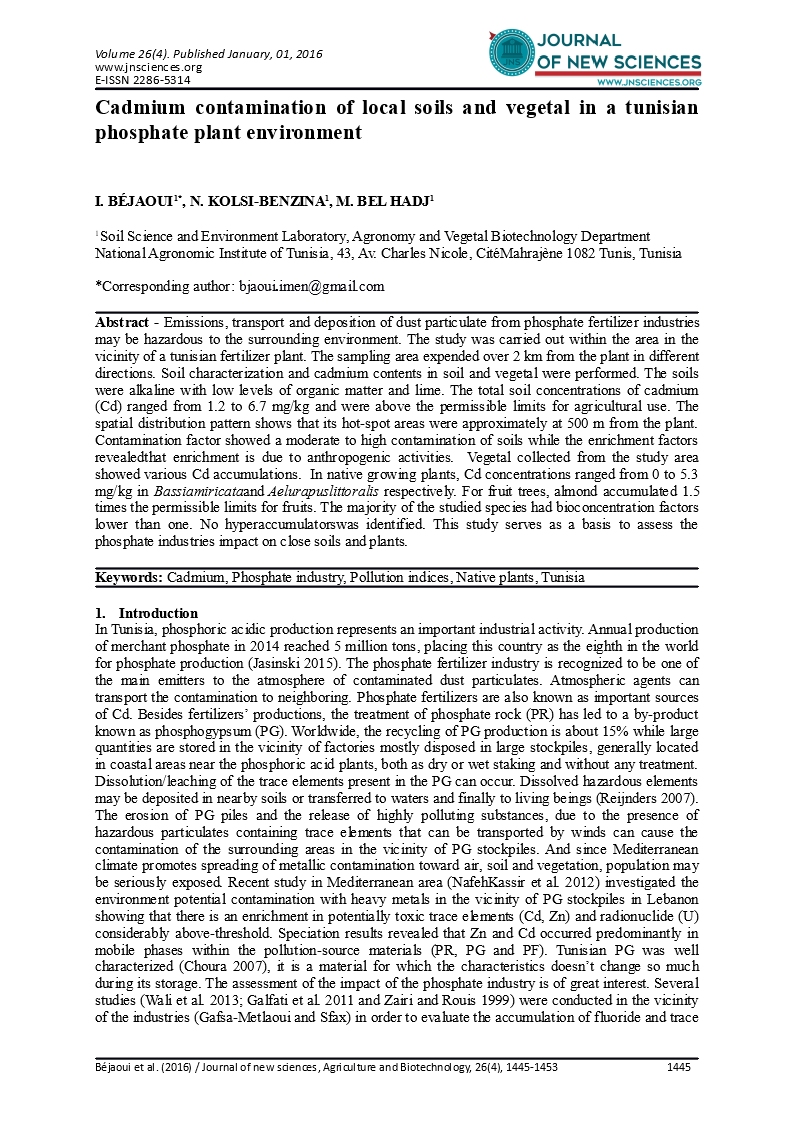- Category: Volume 26
- Hits: 6134
Importance of Arbuscular mycorrhizal fungi inoculation and iron chelates addition on “Rich Lady “peach (Prunus persica L. Batsch) variety: enhancement of mineral status and peaches quality

H. GHARBI-HAJJI1*
M. SANÂA1
1National Institute of Agronomy of Tunisia. Laboratory of soil and environmental sciences. 43, Av, Charles Nicolle,1082, Tunis. Tunisia
Abstract - Peach trees are highly susceptible to lime induced chlorosis which can strongly affect fruit quality and yield resulting on an unbalance of nutrients uptake. The present study was assessed in order to evaluate the impact of arbuscular mycorrhizal fungi (AMF) inoculation and the Fe-ethylenediamine-di (O-hydroxy-phenylacetic-acid) (Fe-EDDHA) on the ‘Rich Lady’ peach variety behavior, under iron deficiency conditions. At 30 days after full bloom (DAFB), a mixture of six commercial strains of AMF Glomus sp. (T1), a synthetic Fe-EDDHA (T2) and a combination of both treatments (T3) were supplied and compared to a non inoculated and non fertilized peach trees (Tc) . The shoots length, the peaches size and the leaves mineral contents were evaluated at 60 and 120 DAFB. The fruit quality was performed at ripening.Results showed greatest effects of the overall applied treatments, compared to the control, in improving the shoots growth, the mineral uptake and equilibrium and the fruit quality. At 60 DAFB, T1, T2 and T3 treatments, significantly improved the foliar total nitrogen and magnesium levels (29%, 34%, 52% and 10%, 16%, 20% respectively) (at P<0.05%). They also significantly decreased the foliar potassium and calcium leaves contents (-22%, -18%, -17% and -21%,-21%, -29% respectively) (at P<0.05%). At 120 DAFB, the T1, T2 and T3 treatments significantly increased the leaves phosphorus levels and leaded to the equilibrium of the iron and magnesium leaves levels. Nevertheless, the T3 treatment was the most effective in decreasing the potassium leaves contents as response to iron chlorosis correction. In addition, it significantly enhanced the peaches size, weight (32.5%) and firmness (15%) and the juice weight (40%), volume (28.9%), pH (4.8%), soluble solids contents (13.3%). Else, it significantly decreased the titratable acidity of peaches by 14.2%. The approach offers challenge of use of AMF for iron chlorosis correction in sustainable agriculture.
Keywords: Prunus persica (L. Batsch), AMF, Fe, Fruit quality



